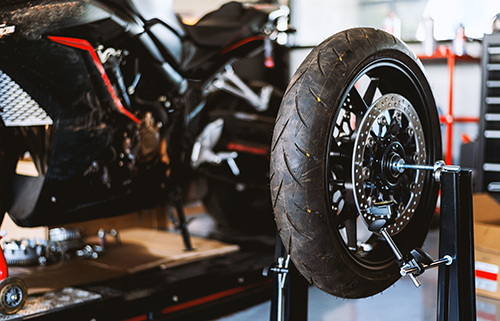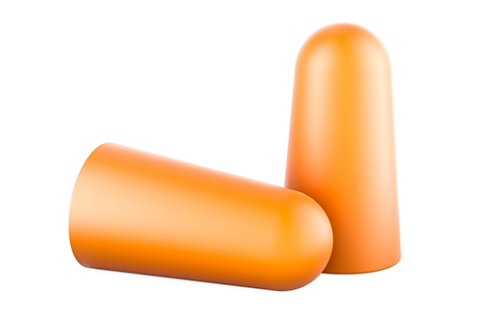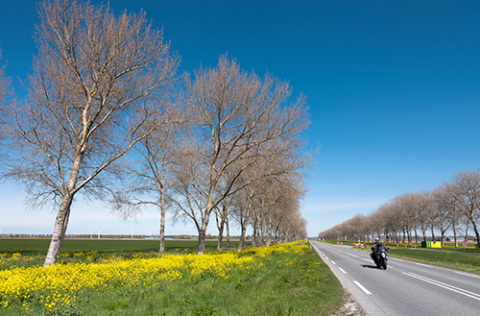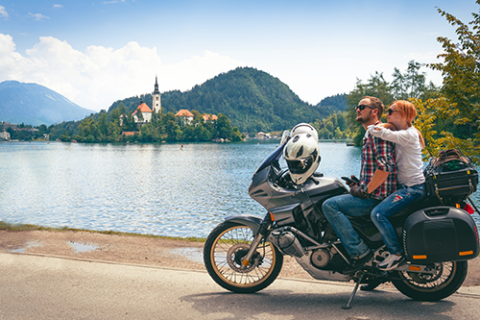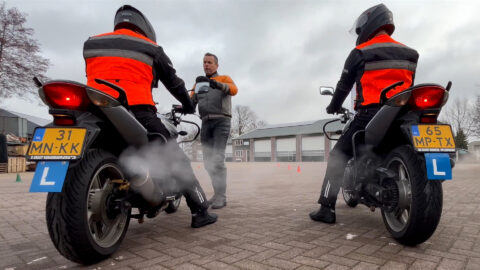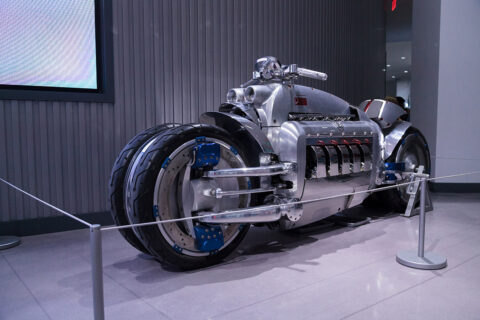Motorcycle tires are literally your only point of contact with the road. They determine how well your bike performs, how comfortable you ride and, most importantly, how safe you are. But how do you know when it's time to replace your motorcycle tires? Or what it costs to do so? We explain step by step what to look for, how to recognize wear and how to break in new tires perfectly. That way you get the most out of your bike, with no surprises along the way.
Don't leave that tire check any longer, read on quickly and find out what you need to know!
When to replace motorcycle tires?
The right time to change your motorcycle tires depends on several factors. While there is no set rule, you can pay attention to the following points:
- Minimum tread depth: The legal minimum tread depth for motorcycle tires is 1 millimeter, but for optimal grip it is recommended that tires be replaced earlier, such as at 2 millimeters. This is especially important in wet conditions, otherwise you risk aquaplaning.
- Age of tires: Even if you don't ride much, motorcycle tires age. Rubber dries out and loses its flexibility and grip after about 5 to 6 years, regardless of wear. The production date of your tire can be found on the sidewall, indicated by a four-digit DOT code.
- Driving style and usage: Do you often drive sportily or on poor road surfaces? Then your tires wear out faster. Check the condition of your tires regularly, especially if you put in a lot of miles or accelerate and brake intensively.
Doubting whether your tires need replacing? Have them checked at a specialized workshop or motorcycle store. They will give you specialist advice and make sure you are safe on the road.
Practical checklist for your motorcycle tires
With this simple checklist, you can be sure your motorcycle tires are in top condition:
- Check the tread depth and replace your tires at less than 2 millimeters.
- Check the tire pressure at least once a month and adjust it according to your engine's specifications.
- Look at visible wear and tear, such as cracks, flat spots or irregular wear patterns.
- Check the age of tires; replace them in old age, even if they still look good.
- Provide a good storage if your engine is stationary for an extended period of time, such as in a dry room without direct sunlight.
- Schedule a timely appointment at a workshop to have your tires replaced or checked.
With this checklist, you can avoid surprises and always be prepared for a safe ride!
How do you recognize wear in motorcycle tires?
Your tires tell you more than you think. If you know what to look for, you can recognize wear early and avoid accidents. Here are some signs to keep an eye on:
- Wear indicators: Most motorcycle tires have wear indicators in the grooves of the tread. When these are flush with the tread, it is time to replace the tire.
- Irregular wear: Look for areas where the tread has worn unevenly, such as more on one side of the tire. This may indicate a problem with your bike's alignment or suspension.
- Cracks or dehydration: Older tires may have small cracks in the rubber. This is a sign that the tire is losing its flexibility and should be replaced.
- Flat spots: Often caused by hard braking or prolonged straight driving, flat spots can seriously affect your bike's grip and stability.
- Reduced grip or vibration: If you notice that your bike is less responsive when cornering or vibrates while riding, it could be due to worn tires.
What is the best way to break in new motorcycle tires?
New motorcycle tires need a break-in period before they perform optimally. This is because the rubber and surface finish still need to "settle. Here's how to do it safely:
- Start slowly: For the first 100 to 200 kilometers, it is important to take it easy. Drive in a controlled manner and avoid sharp turns and hard braking. This helps the tire wear evenly and ensures good adhesion to the road surface.
- Avoid slippery conditions: New tires may feel a little slippery at first due to the protective layer applied during manufacture. Therefore, do not drive on wet or muddy roads right away.
- Practice progressive driving style: Build up slowly in terms of speed and cornering. This gives the tires a chance to develop grip. Start with mild lean angles and gradually tighten the turns as you get more mileage.
- Check tire pressure: New tires may lose some of their pressure during the first few rides. Check regularly to make sure the pressure is correct with your bike's recommended values.
By properly breaking in your tires, you not only increase their safety, but also extend their life. So take some time to get used to your new rubbers and give them a chance to get the best out of your bike.
How long do motorcycle tires last?
How many miles you can ride with motorcycle tires depends on several factors, including the type of tire, your driving style and the conditions in which you ride. On average, the following applies:
- Sports tires: These offer excellent grip, but wear out faster. On average, they last 3,000 to 6,000 kilometers.
- Tour tires: Designed for longer distances and more durable. These tires can last 10,000 to 15,000 kilometers, depending on how you ride.
- All-round tires: A mix between grip and durability. They typically last 8,000 to 12,000 kilometers.
Tips to extend life:
- Check tire pressure: Too low or too high a tension leads to accelerated wear and reduced handling. Check this regularly and adjust the tension according to the specifications in your engine's manual.
- Avoid aggressive driving: Hard acceleration, abrupt braking or sharp turns can make your tires wear faster.
- Regular cleaning: Stones, dirt and oil can corrode the rubber. Clean your tires regularly, especially after off-road riding.
- Proper storage: If you don't use your bike for an extended period of time, make sure the tires are protected from direct sunlight, extreme temperatures and moisture.
These tips will get you back on the road quickly and safely!
